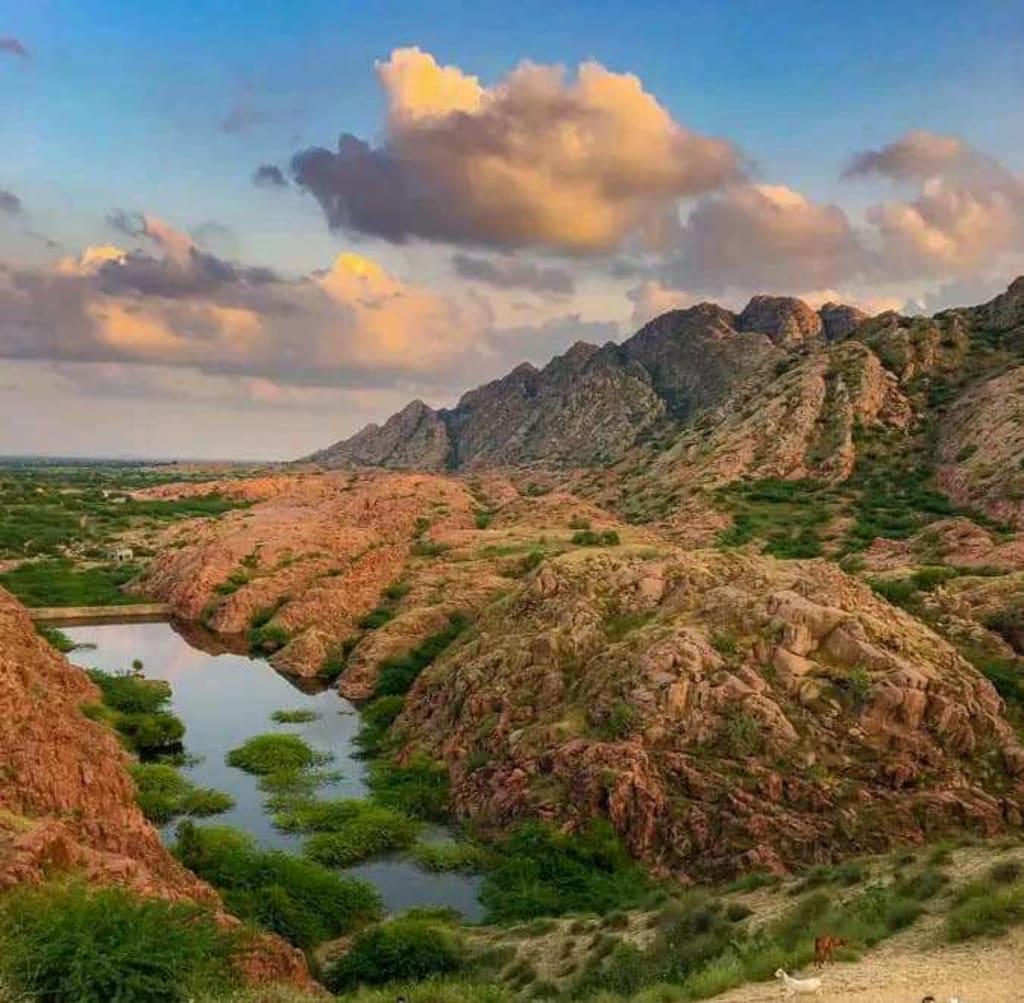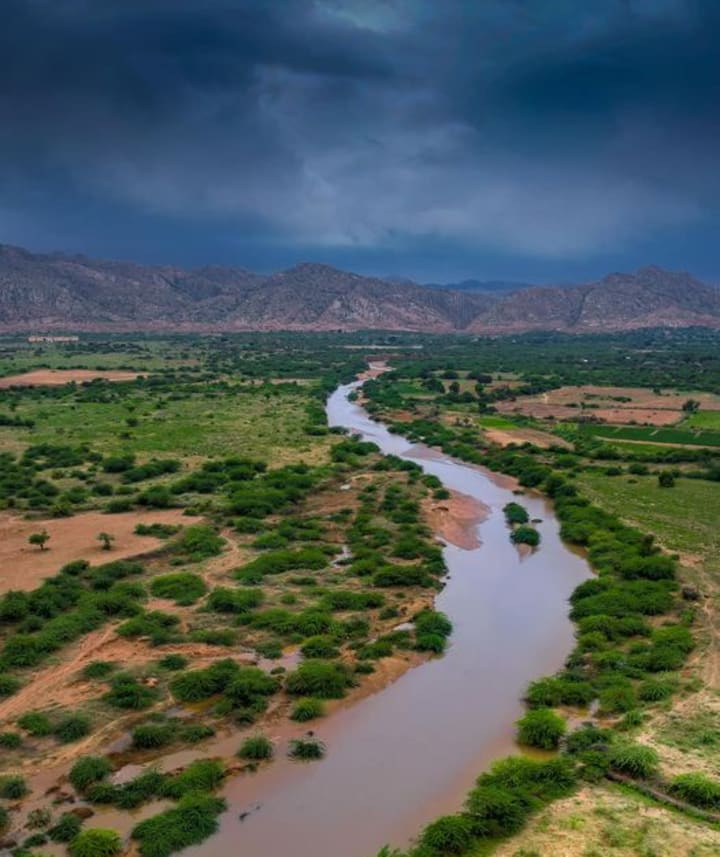Mountain Karoonjhar Hills at Nagarparkar
Karoonjhar Hills at Nagarparkar

Nestled in the remote Thar desert region of Sindh, Pakistan lies an intriguing geological formation known as the Karoonjhar Hills. Located within the Nagarparkar region near the India-Pakistan border, these hills stand out prominently against the flat sandy landscape that surrounds them. Rising to heights of over 300 meters, the Karoonjhar Hills have fascinated locals and visitors for centuries with their unique sandstone structures.
Formed through centuries of wind and water erosion, the hills feature towering rock pillars, caves, and other interesting rock formations. The soft sandstone that makes up the hills has been sculpted over time into whimsical shapes that seem almost surreal. Pillars resembling mushrooms or toadstools dot the hillsides, with overhangs and natural bridges connecting some rock formations. Caves and crevices cut deep into the hills provide refuge for wildlife and a sense of mystery.
The soft sandstone that composes the hills erodes relatively easily compared to harder rock types. This has allowed wind and rain to slowly carve and sculpt the hills over thousands of years into their present whimsical forms. During monsoon season, flash floods rush through dry river beds carving new gullies and further shaping the landscape. When the rains subside, strong desert winds pick up loose sand and carry it to new areas, continually changing the hills.
This constant natural erosion and reshaping of the landscape is what gives the Karoonjhar hills their otherworldly appearance. Up close, one can see striations and patterns in the rock revealing the direction wind and water have flowed over long periods. Overhangs poised as if about to collapse hint at the hills' impermanence in geological time. Yet they have stood as a landmark in the Thar desert for millennia.
The soft sandstone is also easily workable, and ancient petroglyphs and rock art left by past inhabitants can still be seen etched or painted on boulders and cliff faces throughout the hills. Simple geometric designs alongside images of animals, people, and handprints offer a glimpse into the lives and beliefs of those who once called this rugged landscape home.
Today, the hills are an important habitat for local wildlife including desert foxes, jackals, birds, and reptiles who have adapted to the harsh desert climate. During the monsoon season, the hills transform as ephemeral plants sprout up taking advantage of the brief rains. This sudden bloom of vegetation in turn supports insect populations and larger grazing animals.
For locals living in the surrounding desert plains, the Karoonjhar hills have long been a landmark offering refuge from the heat. Their caves provided shelter from the sun and protection from winds. Springs at the base of some hills even offer a reliable source of fresh water year-round.
In more recent history, the hills became an important waypoint for travelers crossing the Thar Desert on ancient trade routes between Sindh and Rajasthan. Caravans would rest and take shelter within the hills during their journeys. Even today, the hills can be seen from miles away across the desert sands, beckoning travelers nearing the end of their journey.
The Karoonjhar hills remain one of the most spectacular natural wonders in the Thar Desert region. Their unique whimsical forms sculpted over aeons continue to inspire curiosity and awe in visitors. As winds and rains shape new formations, the hills stand as a lasting monument to the transformative powers of natural elements and a reminder of the impermanence even of stone. For those who venture to experience their rugged beauty, the Karoonjhar hills offer a glimpse into the forces that have carved this desert wilderness for thousands of years.








Comments
There are no comments for this story
Be the first to respond and start the conversation.